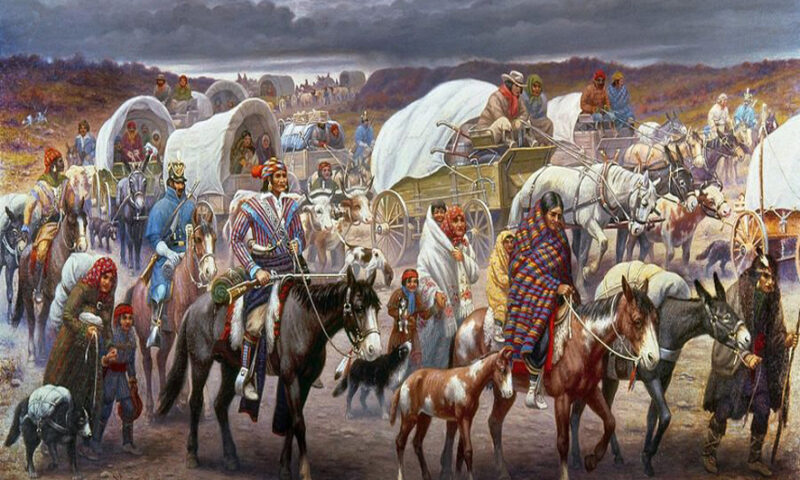By Spy Uganda
The Trail of Tears began following the discovery of gold in Georgia which saw the intense demand by whites to have Indians relocated from the land. In light of the demands, the U.S. Congress and President Andrew Jackson pushed for the passage of the Indian Removal Act of 1830 which allocated $500,000 for the compulsory acquisition of Indian lands in the southeast and resettling of the original owners to Mississippi.
According to BlackPast, about 70,000 Indians with African Americans who were 10 percent of this figure were affected. They were driven out to what has become known as Indian Territory.

Left with no option, the Indians with their enslaved Africans had to use various routes to get to the land promised them. The forced relocation and daunting resettlement are etched on the memories of the Indian society and the African-American community in Mississippi as the Trail of Tears.
Thousands of enslaved Africans who were considered property by the Indians lost their lives and suffered untold hardships during this great exodus.
The enslaved Africans were tasked with the responsibility of hunting for food, cooking and cleaning their slaveholders.

Historical records state that at least 175 enslaved Africans owned by an influential Cherokee, Joseph Vann, died during this migration. He had delegated 200 slaves to lead him through this movement from Georgia to Mississippi.
These events unfolded during the 1830s under British colonial rule and in the early decades America gained independence. The whites were insistent that their population was growing at an alarming rate and there was a need for the federal government to provide them with new lands to settle on. This was also fueled by the actions of land speculators who were key advocates of this movement.
Five major Indian tribes who are known as the “Five Civilized Tribes” were the main casualties. Not only did they lose their lands but the values, religion and customs they had adopted from the whites came under siege. The prominent Indians owned large farms and plantations akin to what was practiced by southern white farmers who relied on enslaved Africans for labor.

In the 1833 census, the Creek Indian population stood at 22,694 with 902 enslaved Africans, while the Cherokees were 16,542 with 1,592 Black slaves. These affluent Indians mistreated the enslaved Africans and pushed them to meet the global market demands of cotton. They were of the view that enslaved Africans were inferior. They rode on the backs of the slaves to amass wealth. The enslaved Africans were vested with the task of preparing the lands, plowing and planting cotton and so on. These slaveholders, although always a minority of their tribes, were nonetheless oppressors of Blacks they owned and enthusiastic participants in a global economy driven by cotton. They also believed they were racially superior to Blacks.
Those who were a bit skilled were engaged in blacksmithing and carpentry among others as well as domestic roles. At the time of the Civil War, the enslaved population was 7,367 but the mistreatment continued unabated.




